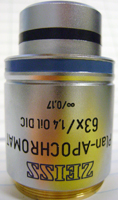 Zeiss 710 MP microscope
Zeiss 710 MP microscope Zeiss 710 MP microscope
Zeiss 710 MP microscope
Beads tests for Z axis resolution 20110119
The following picture shows slices in XZ (coverslip at the bottom) of 0.5 um Tetraspeck beads collected with the 63X oil immersion objective using Zeiss Imersol W oil RI=1.334. The beads were mounted in water under a 1.5 coverslip. Original image was scanned at 0.13 X 0.13 X 0.26 um per pixel. Pinhole was set at 1 Airy Unit (according to Zeiss). The lasers used were 488, 543, and 633 nm and the collection ranges were 500-535, 560-610, and 650-710 nm respectively.
Conclusion: for standard confocal there is no correction for chromatic aberration necessary in the Z axis. For more precise work, the user may want to shift the infra-red image up 0.26 to 0.5 um relative to the green and red images.
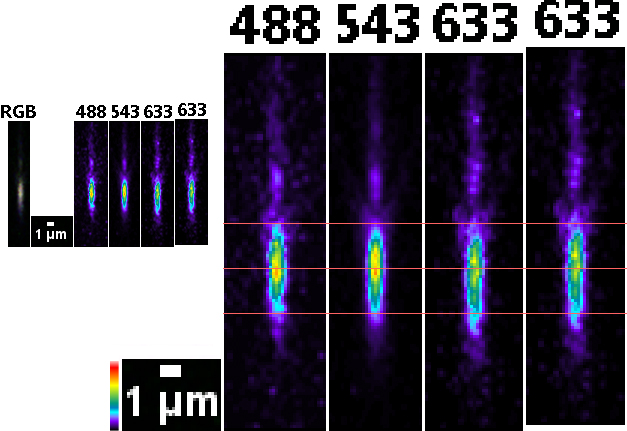
At the far right, the 633 image is shifted 0.5 um up relative to the others.
With the 405 laser instead of the 488 nm one and with detections at 420-460, 560-610, and 665-730 nm, the low blue Z series may need a 0.26 to 0.5 um shift down towards the coverslip.
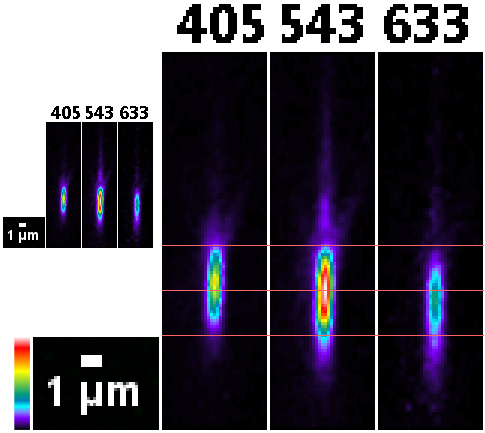
(For more precision, this could be redone with smaller beads in mounting media, preferably overlaid on a biological sample, and with sequential image detection instead of simultaneous.)
This was done one day after Zeiss realigned the microscope. Before realignment images here.
The alignment is not completely corrected. The 488-543-633 stack shown above, contrast equalized, radially resliced, and shown with 45 degree average projected wedges shows slight tilt, but it is not noticeable without the contrast EQ.
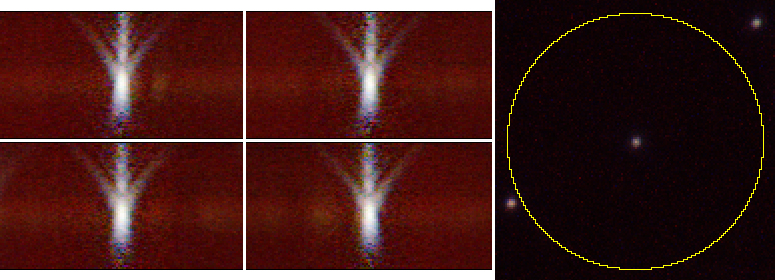
Another more important alignment issue is in XY and is common with the confocal microscopes that use a separate light path for the 405 laser. Shown at 200% original scale, the 420-460 nm image is a pixel or two off all the other images in the XY axis (the Z step is 0.34 um). Red is the 420-460 nm channel and green/blue are the other channels.
![]()
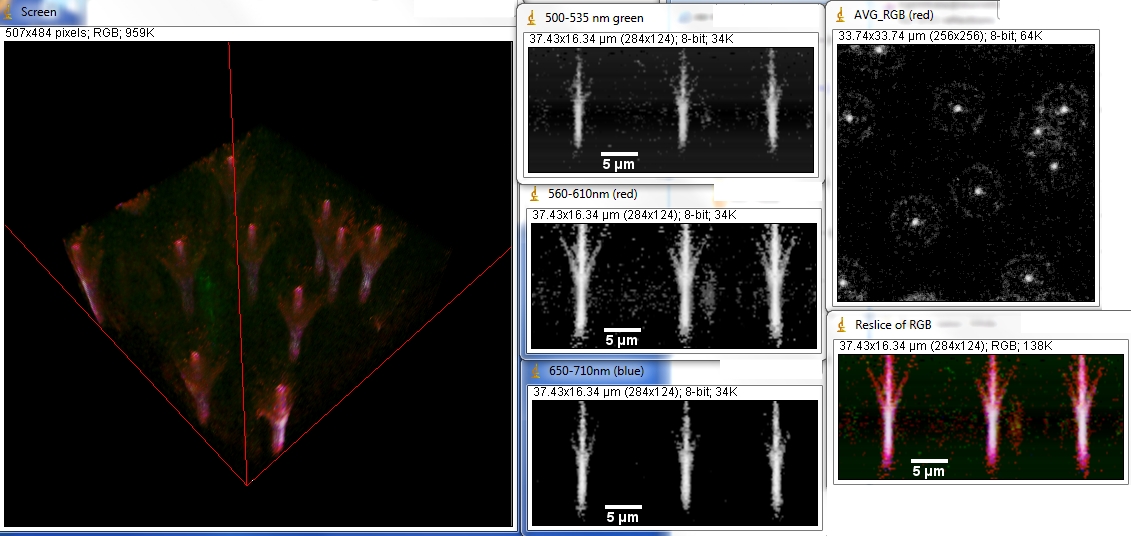
comments, questions, suggestions: Michael.Cammer@med.nyu.edu
Link to main lab pages: http://saturn.med.nyu.edu/research/mp/dustinlab/